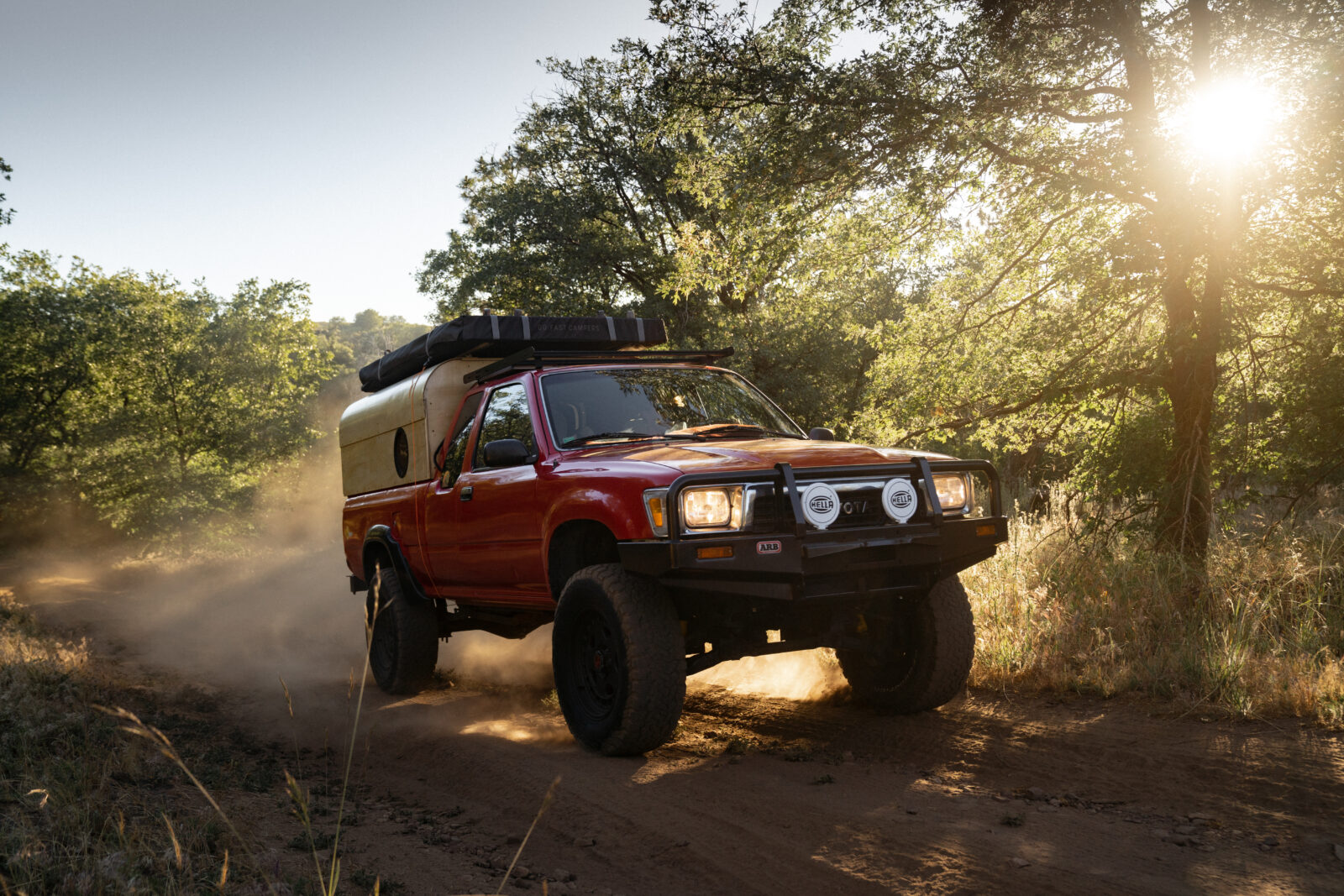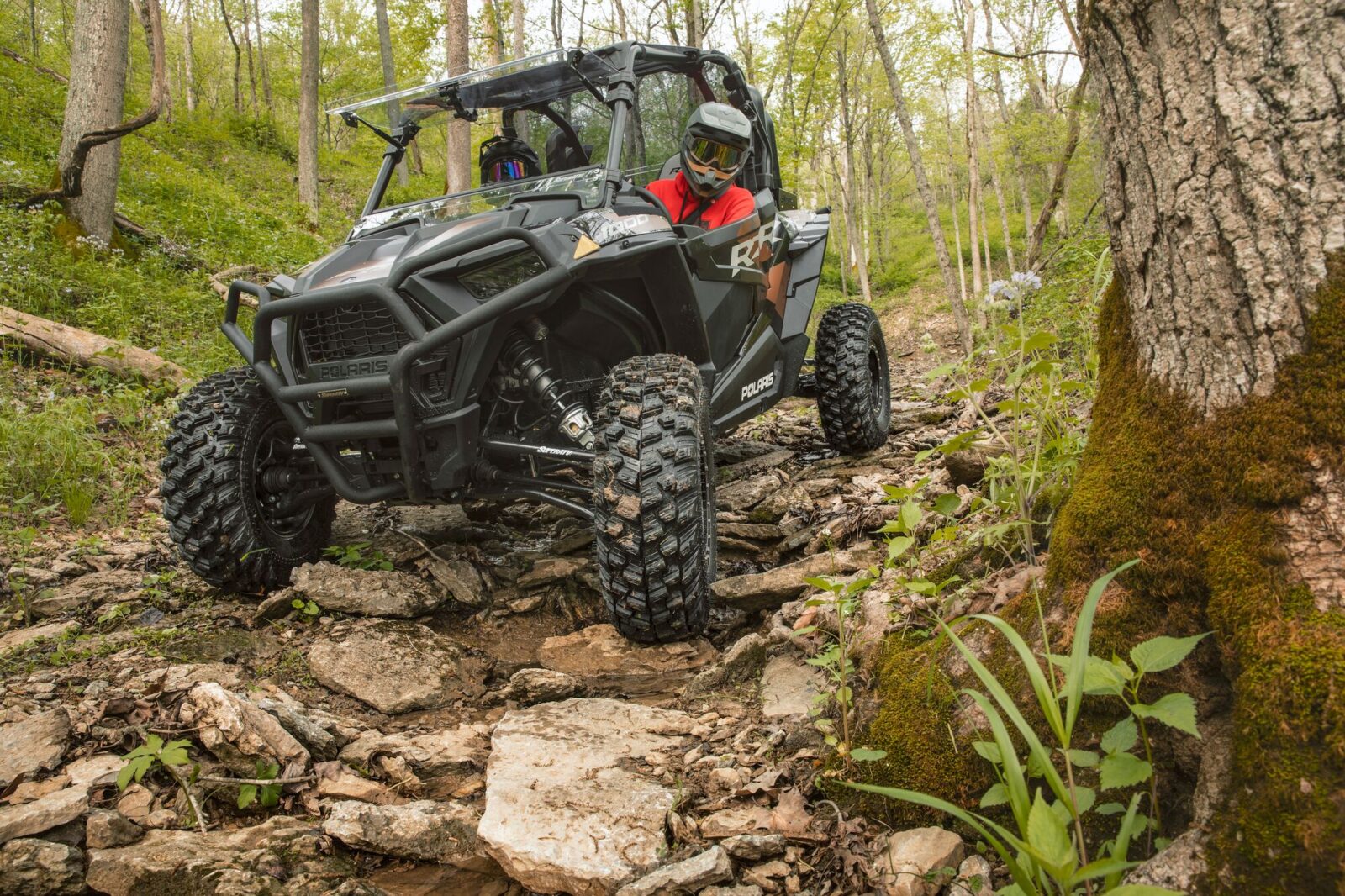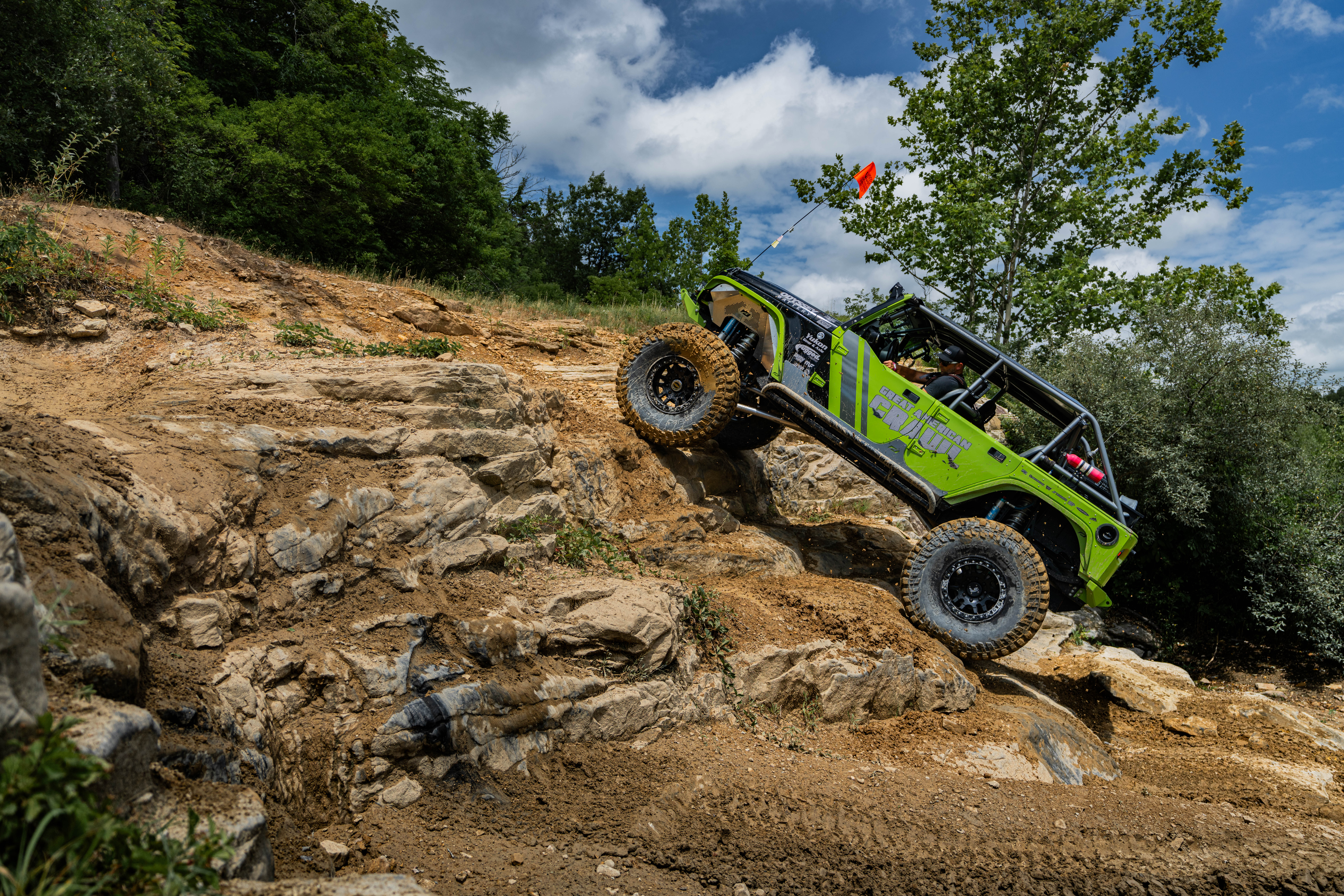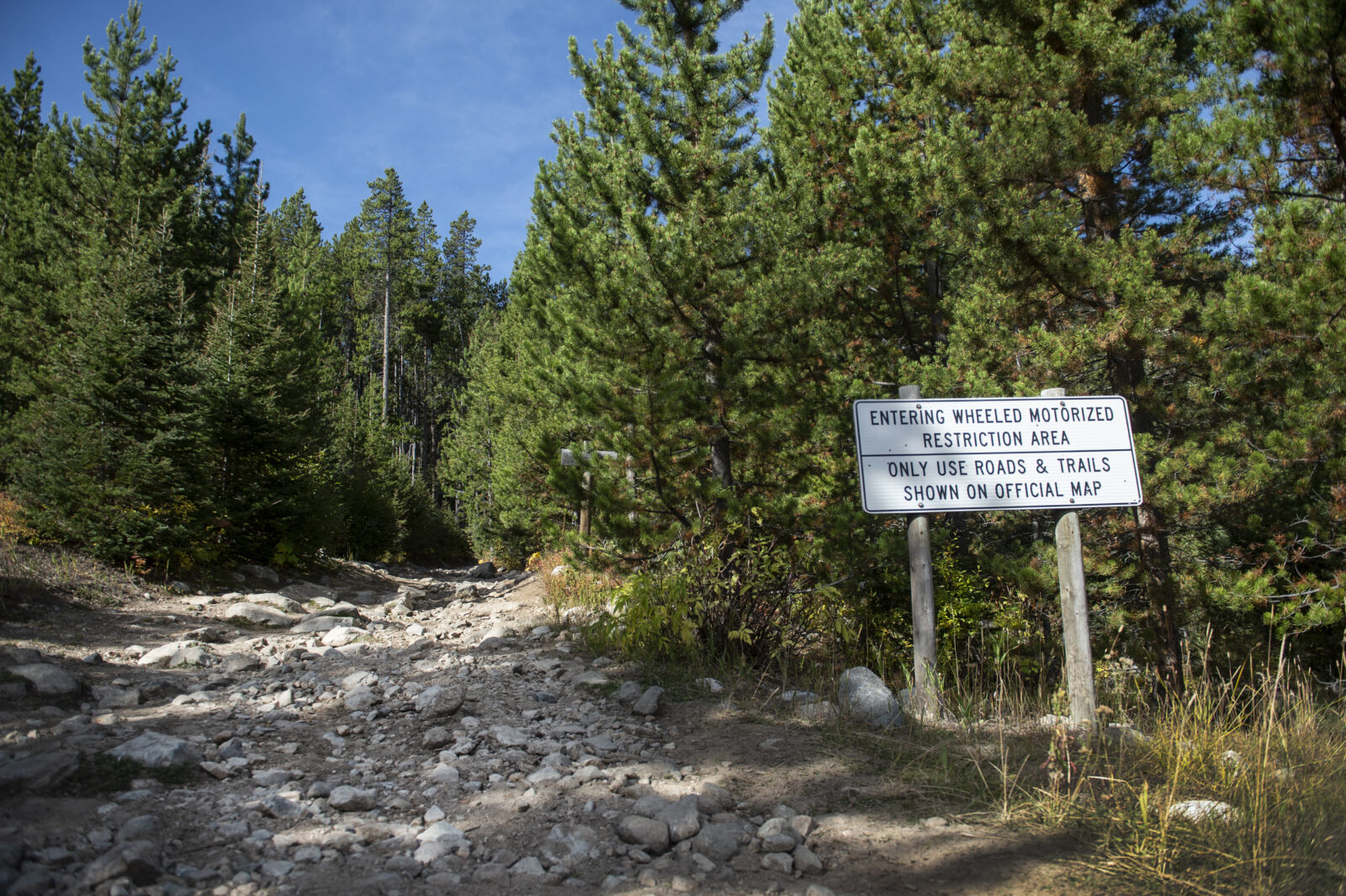OHV Trails Uncovered: A Comprehensive Guide to Off-Highway Adventures
Exploring Off-Highway Vehicle (OHV) trails has become a popular form of recreation for many Americans. It’s no wonder, as it’s one of the best ways to explore the many wide-open spaces and variety of landscapes where one can experience the thrill of adventure that OHV trails provide. Whether it’s two wheels or four, motorcycle, ATV, UTV, or 4×4, Off-Highway Vehicle trails have continued to grow in popularity within the greater off-road community.
In the following overview, we’ll discuss in more detail what designates a trail as an OHV trail, the types of vehicles allowed to access them, offer up some OHV safety tips, then show users how to plan and prepare for their next OHV adventure using the onX Offroad app. Finally, we’ll show off-road enthusiasts how they can quickly locate some of the best OHV trails in the United States using the onX Offroad App or website.

What are OHV Trails?
OHV (Off-Highway Vehicle) trails are designated routes for motorized licensed vehicles—such as four-wheel-drives (4x4s) and Side-by-Sides (UTVs)—or vehicles not intended for highway use, such as dirt bikes and ATVs/Quads. Designated OHV trails vary greatly, from gravel roads to narrow singletrack, and are often located in scenic areas with natural beauty. Drivers can expect to navigate rocks, mud, water crossings, and steep climbs. Trails can vary from beginner to expert levels of difficulty. OHV trails are typically marked and managed by various land management agencies, ranging from local to federal levels.
OHV Trails vs OHV Riding Areas
By contrast, “OHV riding areas” are large, unmarked open spaces on hundreds of acres of land where off-road enthusiasts can openly ride or drive their vehicles within designated boundaries. OHV riding areas offer a less structured experience with more significant environmental and safety challenges. Unlike OHV trails, which are usually maintained year-round and have their own rules and trail etiquette guidelines, OHV riding areas have limited regulations, which means drivers must always be on the lookout for other vehicles around them.
What Vehicles Can Go on OHV Trails?

OHV trails can be accessed by any motorized vehicle designated for off-highway use as long as the trail allows the vehicle type. For example, some trails, like two-track trails, may be limited to licensed 4×4 vehicles, whereas many singletrack trails are limited to motorcycles and some ATVs. Regardless, one should check the trail’s access level beforehand and be sure their vehicle has enough ground clearance for the trail’s difficulty level. From stock AWDs to ATVs to dirt bikes and purpose-built rigs, OHV trails were created for various vehicle types. Vehicles one can choose to enjoy OHV trails include:
- 4×4 Rock Crawlers and custom builds
- Dirt bikes (Electric or Internal Combustion)
- All-Terrain Vehicles (ATVs) or Quads
- Side-by-Side (SxS) or Utility Terrain Vehicles (UTVs)
- All-wheel Drive (AWD) and Four-wheel Drive (4WD) vehicles
- Unconventional Off-road Vehicles like:
- Off-road Scooters
- Off-road Hoverboards
- Off-road Go-Karts
Safety and Preparation for OHV Riding
When embarking on an off-road adventure, it’s imperative to prepare for the unknowns of the backcountry. If you are new to off-roading, it’s wise to take some driving or riding lessons and get to know your vehicle’s driving and handling characteristics. Be sure to review any legal requirements and obtain any permits needed. Although it varies by state, from state-wide permits to specific trail systems, most OHV trails require some type of permit to ride legally on designated OHV trails.
Next, prepare for the rigors of off-roading. Items such as vehicle repair tools, vehicle recovery items, emergency kits, navigation equipment, and other essentials are necessary for the off-road adventurer. They can mean the difference between a fun or a failed adventure. Lastly, research and plot your off-road route using a mapping tool like the onX Offroad App to avoid unwelcome surprises on the trail. Suggested items one should carry when off-roading include:
- First-Aid Kit
- Fire Extinguisher
- Gloves
- Shovel
- Extra Fluid Storage
- Work Light or Headlamp
- Blankets and Layers
- Fire Making Tools
- Water, Snacks, and Food
- Hand Tool Set
- Duct Tape and Zip Ties
- Tire Repair Kit and Off-Road Jack
- Inflator/Air Compressor
- Battery Charger/Starter
- Vehicle Recovery Kit
- Earth Anchor and Vehicle Recovery Boards
- Satellite Communicator
- Two-Way Radios or Walkie Talkies
- onX Offroad GPS App
For more details, see our complete list of Off-Roading Essential Gear.
OHV Trail Maps
Finding OHV Trails near you is simple using the onX Offroad App. This can be a difficult task without knowing the name of a trail. A quick Google search for “OHV trails near me” will return results. However, those who want a more detailed method of finding OHV trails can utilize the many robust features of the onX Offroad App.
Finding nearby trails is as simple as opening the app and tapping “Discover” on a smartphone or tablet. Users can also type “OHV” in the app’s search field, returning a list of OHV trails and areas, including everything from off-grid trails or renowned Jeep Badge of Honor Trails, or zoom in to a given location and look for the square OHV icon. Note that not all OHV icons indicate OHV “trails,” but the icon is also used to indicate OHV “riding areas.”
With onX Offroad’s Go & Track GPS capabilities, drivers can use waypoints to plan or mark essential points along the way and track, save, and share trip details like location, distance, velocity, and altitude. Save your waypoints for later use or to share your adventures with friends. With CarPlay or Android Auto, you can sync maps to see trails come to life in the vehicle’s dash infotainment system. There is no need for paper maps when you can have every map in your hand.

Find OHV Trails Near You
For those who like planning at home on a laptop or desktop computer, onX Maps has two efficient ways to find nearby OHV trails using the onX website. The team at onX Maps has created two places to begin a search for OHV trails by state or by keyword. You’ll have quick access to thousands of trails logged in the onX Offroad database.
Off-Highway Vehicles on BLM Land
BLM (Bureau of Land Management) land differs from other off-road trails. These are federal lands managed by the Bureau of Land Management, a government agency under the U.S. Department of the Interior. By contrast, other OHV trails can be located on state, local, private, or other federal lands, such as those managed by the U.S. Forest Service or National Park Service, each having different management and regulations. Federally managed BLM lands accommodate a variety of activities and tend to allow broader access for off-road vehicles, in contrast to more regulated state or private trails.

OHV Trail Conservation
One final note: at onX Offroad, stewardship means responsibly enjoying off-road trails with an awareness of their impacts. These include courteous behavior on the trail, respecting other trail users by using proper trail etiquette, and a commitment to the environment. Trail stewardship embodies respect for past and future trail users, a commitment to keeping trails clean, and respect for wildlife and natural surroundings. It’s a conscientious part of the off-roading community to care for the future of access to the thousands of trails that make off-roading so alluring.
Leave No Trace: onX Offroad’s commitment to Stewardship: https://www.onxmaps.com/offroad/stewardship